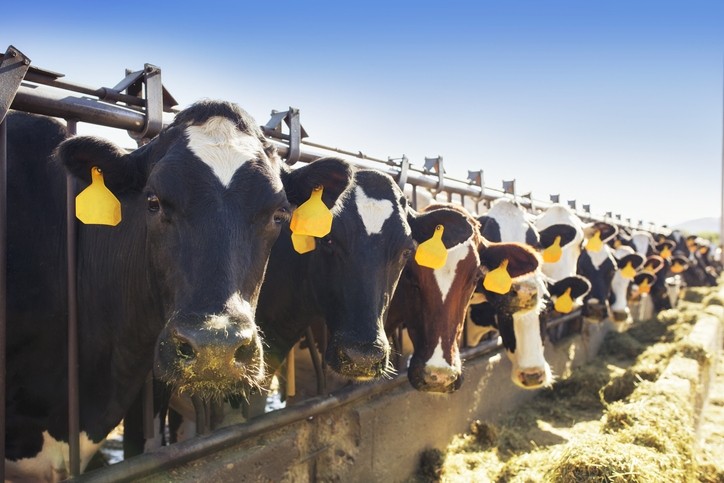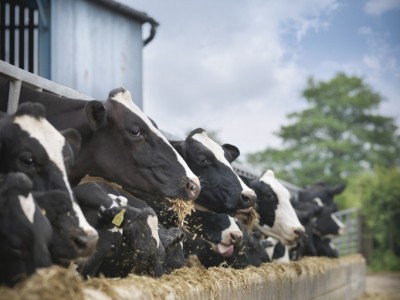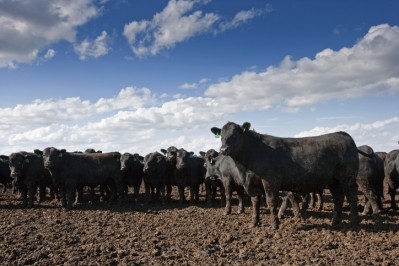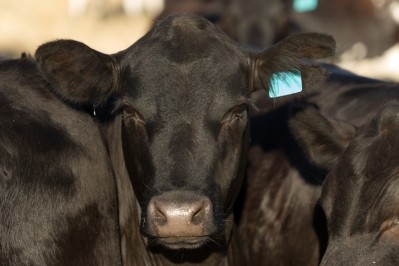Penn State to research methane-mitigating potential of plant and fungal derived compound

The Foundation for Food and Agriculture Research (FFAR) is providing the US university researchers a grant from its Seeding Solutions program of $455,704. Purina Animal Nutrition is providing matching funds for a total $914,543 investment.
FFAR’s seeding solutions grant program is an open call for ideas that address pressing food and agriculture issues. Saharah Moon Chapotin, executive director of FFAR, said the project will investigate a novel way to move the US dairy and beef industries toward net zero emissions.
The Penn State team will be led by Alexander Hristov, distinguished professor of dairy nutrition, and an international leader in research related to enteric methane emissions from livestock.
Hristov and colleagues will conduct research into using a non-synthetic form of the anti-methanogenic compound 3-nitro-1-propionic acid, or 3-NPA, as a feed additive.
Preliminary data have shown a considerable methane-mitigating potential of 3-NPA at practical inclusion rates, he reported.
The Penn State team will evaluate both the efficacy of using a natural source of 3-NPA, as well as a sustainable, cost-effective method for delivering it from fungal and plant sources. The researchers will also investigate the possibilities of enhancing 3-NPA content in those sources.
Through a series of tests done in a laboratory, as well as on living sheep and lactating dairy cows, the scientists will look to determine the ideal dietary and biological conditions, in addition to 3-NPA doses and sources, required to reduce enteric methane emissions.
A feed supplement that could be used by both conventional and organic producers, and one that does not diminish production would help fill the need for an effective enteric methane mitigation strategy for ruminant livestock, said FFAR.
Enteric methane emissions
Enteric fermentation is the highly evolved process that allows ruminants to digest cellulose, the basic component of plant cell walls. Rumen microbes ferment simple and complex carbohydrates like cellulose to produce volatile fatty acids (VFAs), which can satisfy over 70% of the energy requirements of the host animal. However, the production of certain VFAs also produces hydrogen (H2), which is converted to methane (CH4) by methanogenic archaea.
Although CH4 is short-lived relative to other GHG, persisting in the atmosphere for about 10 years, it has a significant impact on the climate due to its global warming potential (GWP), which is about 28-times higher than that of carbon dioxide (CO2).
Enteric methane, not to be confused with methane emissions from manure, is mostly released by eructation directly from the animal and is the largest direct contributor to GHG emissions in beef and dairy production. In the US, an estimated 26.7% of total methane (CH4) emissions are attributed to enteric fermentation, which corresponds to about 2.7% of anthropogenic greenhouse gas (GHG) emissions, according to the EPA.
Numerous approaches for mitigating enteric methane emissions have been proposed and investigated over the last several decades, and these primarily focus on animal nutrition, genetics, and management.
Prohibitive cost of application
A study published in the Journal of Animal Science showed the supplementation of 3NPA dramatically reduces methane (CH4) production under in vitro conditions, but the effect is dose dependent.
“However, the effect is negatively extended to VFA production which could compromise the animal productivity. The mechanism of action of this CH4 inhibitor remains unknown…. At present, a major limitation for the use of 3NPA as feed supplement is the high cost of its application. Therefore, finding alternative, lower cost sources for the nitrocompound is a major challenge for researchers.
"In addition, more thorough knowledge of the effects of nitrocompound supplementation on the rumen microbial population is needed to better understand their effect on rumen fermentation. Finally, more research is needed to determine the effect on animal productivity and to learn the optimal and safe dose for use, since the complete metabolism of the nitrocompound will guarantee animal food product free of this compound and a better economic performance of the food product,” concluded the authors of that paper.















